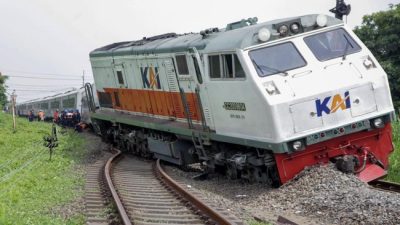Growth in the region is dampening, says the World Bank in its twice-a-year update, underscoring the need for countries to build resilience.
Released this week, the latest South Asia Economic Focus, Coping with Shocks: Migration and the Road to Resilience, projects regional growth to average 5.8 percent this year – a downward revision of 1 percentage point from the forecast made in June.
Bagaimana tanggapan anda mengenai artikel ini?
This follows growth of 7.8 percent in 2021, when most countries were rebounding from the pandemic slump.
“Pandemics, sudden swings in global liquidity and commodity prices, and extreme weather disasters were once tail-end risks. But all three have arrived in rapid succession over the past two years and are testing South Asia’s economies,” said Martin Raiser, World Bank Vice President for South Asia, in a press release on Thursday.
“In the face of these shocks, countries need to build stronger fiscal and monetary buffers, and reorient scarce resources towards strengthening resilience to protect their people,” Raiser added.
While economic distress is weighing down all South Asian countries, some are coping better than others.
Exports and the services sector in India, the region’s largest economy, have recovered more strongly than the world average while its ample foreign reserves served as a buffer to external shocks.
The return of tourism is helping to drive growth in Maldives, and to a lesser extent in Nepal—both of which have dynamic services sectors.
The combined effects of COVID-19 and the record-high commodity prices due to the war in Ukraine took a heavier toll on Sri Lanka, exacerbating its debt woes and depleting foreign reserves. Plunged into its worst-ever economic crisis, Sri Lanka’s real GDP is expected to fall by 9.2 percent this year and a further 4.2 percent in 2023.
High commodity prices also worsened Pakistan’s external imbalances, bringing down its reserves. After devastating climate-change-fueled floods submerged one-third of the country this year, its outlook remains subject to significant uncertainty.
(WAH)













